Husky colors come in a variety of shades and patterns. Their standard coat combination is white and agouti, black, grey, red or sable, but they come in other colors too. Some coat patterns, like Merle, are also associated with health issues. Whether it’s the brave Siberian Husky or the powerful Alaskan Husky, their coats are instantly recognizable. Siberian Huskies have worked side-by-side with people for centuries, hunting, hauling and helping. Today we share the different colors and patterns on this amazing breed with photos and pictures to help you tell them apart!
Contents
- Alaskan vs Siberian Husky colors
- Standard vs Mini Husky colors
- Husky color chart
- Uncommon colors
- Wooly Husky coats
Alaskan vs Siberian Husky Colors
The Siberian and Alaskan Husky both have thick fur coats, erect ears and piercing eyes. However, there is a key difference! The Siberian Husky is a purebred dog breed that is bred to conform to an official standard. This breed standard details everything from Siberian Husky colors to eye colors to temperament traits and more.
In contrast, the Alaskan Husky is not a purebred dog. The Alaskan Husky is actually a mixed breed dog bred to work as a sled dog. Therefore, Alaskan Husky colors can vary a great deal. Their colors aren’t important as long as the dog has an aptitude for sledding.
Technically the Alaskan Husjy could be any combintion of canine colors in a variety of patterns. But in reality they are usually black or brown and white, in the same bi color pattern as the Siberian Husky.
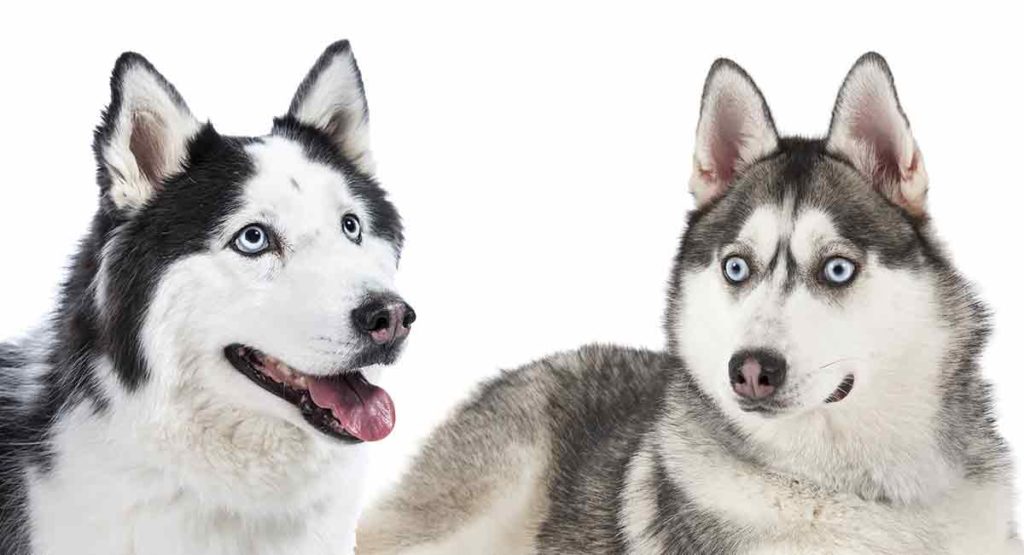
History and Origins of Husky Colors
Genetic studies show the Siberian Husky is very closely linked to an ancient Siberian wolf that lived more than 35,000 years ago. Modern Siberian Huskies can display a variety of different Husky colors and patterns. However, these are often similar to the colors and patterns still seen in wild wolves today.
Standard vs Mini Husky Colors
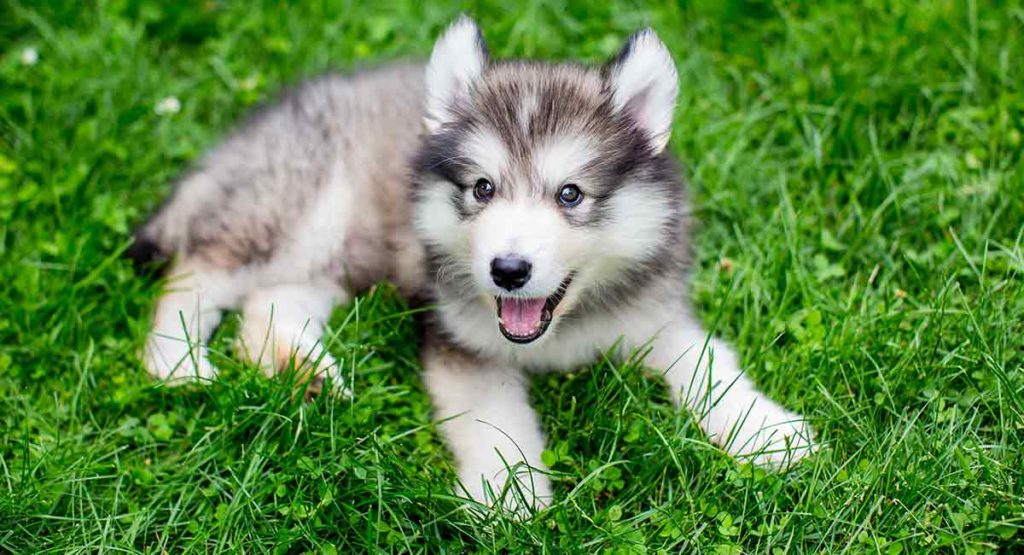
Interestingly, one thing has changed between modern Siberian Huskies and their wild wolf ancestors. Siberian Husky dogs today are bred in two sizes: standard and miniature. However, mini Husky colors and standard Husky colors are the same for the most part.
Husky Color Genetics
The genetics of dog breeding can quickly become complex. For starters, it can be challenging to identify single genes that are responsible for producing certain Husky colors. Often, the same gene(s) that control for coat color may also influence other developmental processes. In particular this includes the development of vision or hearing.
Are Some Husky Colors Healthier Than Others?
There are no disallowed Husky colors, patterns or markings due to health issues. However, some breed clubs have identified the “merle” and the “brindle” pattern of markings as concerning.
The Siberian Husky Club of America (SHCA) has released a statement indicating that these marking types may be the result of genetic influence from other dog breeds. In other words, dogs bearing these markings may not be true purebred Siberian Huskies.
Health Issues in the Merle Husky
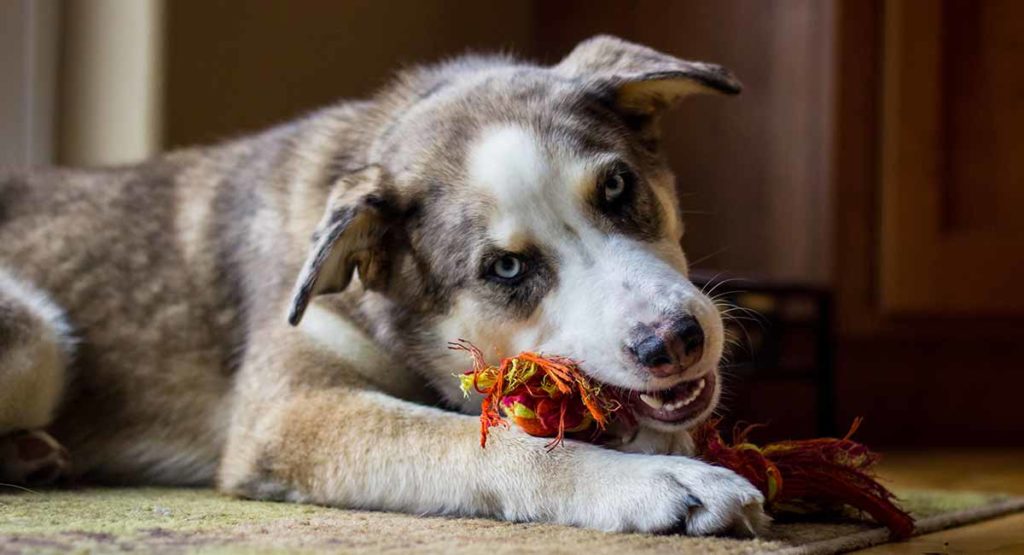
In addition, the SHCA states they are not supportive of the merle pattern. This is due to its association with certain known canine genetic health issues. These include:
- immune system dysfunction
- eye disorders
- deafness
Double Merle Husky Colors
These health issues can become more severe. For example, when a breeding pair of Siberian Husky dogs is each carrying the gene that contributes the merle pattern. This produces what is called a “double merle.” Health issues resulting from a double merle are not always fatal. However, they can be particularly life limiting to the point of requiring euthanasia. Examples of such health issues include:
- missing eyes
- poorly developed eyes
- deafness
- puppies being born both blind and deaf
Siberian Husky Color Chart
The Siberian Husky color chart is so varied it has been nicknamed the “Siberian Rainbow.” The following colors are standard:
- agouti and white
- black and white
- gray and white
- red and white
- sable and white
- white
Other Purebred Husky Colors
The following colors are recognized but not standard on the Husky color chart:
- black
- black/grey and white
- black/tan and white
- brown
- brown and white
- brown/black and white
- copper and white
- grey and black
- tan
- black and tan
- white and tan
Pedigree Husky Markings
The breed standard states that the following markings are not standard but are recognized:
- black points
- pinto
- piebald
Rare Siberian Husky Colors
Husky colors vary massively from one dog to the next. In fact, no unusual or rare colors, patterns or markings have been identified!
AKC Colors
The current American Kennel Club (AKC) Siberian Husky breed standard allows for all colors, including pure white. The breed standard specifies that it is quite normal to see a wide variety of visually striking patterns and markings on the head.
This means there can be literally infinite combinations of colors and patterns and markings. None of them will disqualify a pedigreed purebred Siberian Husky from competing in the show ring.
Solid Coats
Colors can range from a single solid (self) color to a multi-color pattern or solid colors alternating with markings in a vast array of variations. These colors are generally acknowledged as the most common coat colors in the purebred Siberian Husky today:
- Black
- Grey
- Red
- White
Black Siberian Husky
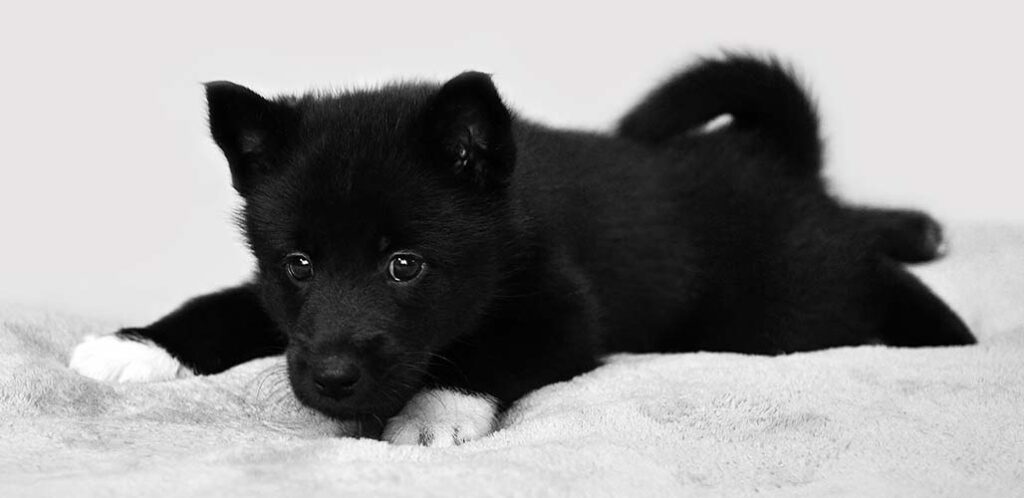
Black can appear to be jet black, matte black or dilute black. Dilute black can appear closer to blue or grey.
Grey Siberian Husky
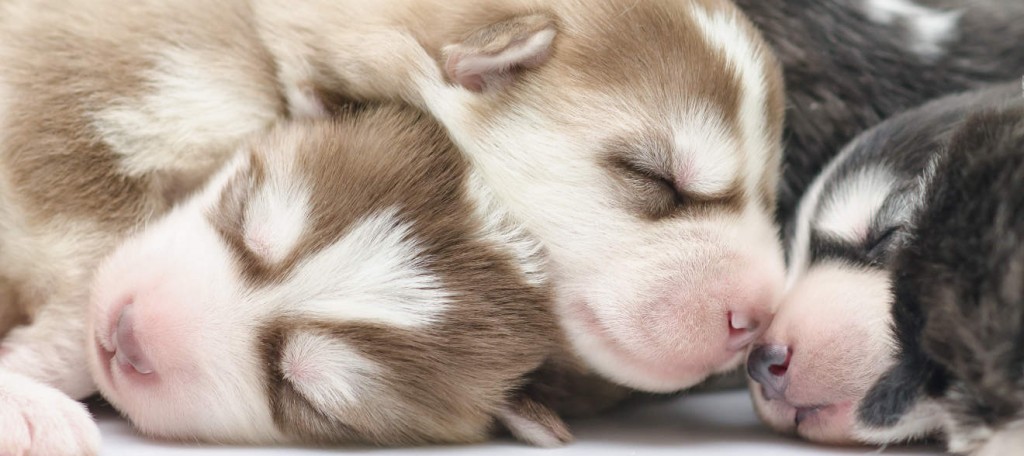
The gray color can be dark “wolf” gray, matte gray or a dilute gray that appears yellowish. The
Siberian Husky color silver is another form of dilute grey.
White Siberian Husky
The white color can be solid pure white, or white with a yellowish or cream cast. There may also be black guard hairs. Typically the undercoat is pure white.
Red Siberian Husky
The red color range can span the gamut from a dark rusty brownish red to a light, strawberry blonde red. Copper is one form of red.
Bicolor Husky Colors and Patterns
Husky coats can be single-color (self color) or solid. Alternatively, they can form a pattern with two or three colors that all appear on the coat. Two of the most common colors and patterns are black and white and a pattern called “splash.”
- Black and white
- Grey and white
- Red and white
- Sable and white
- Agouti and white
Black & White Husky
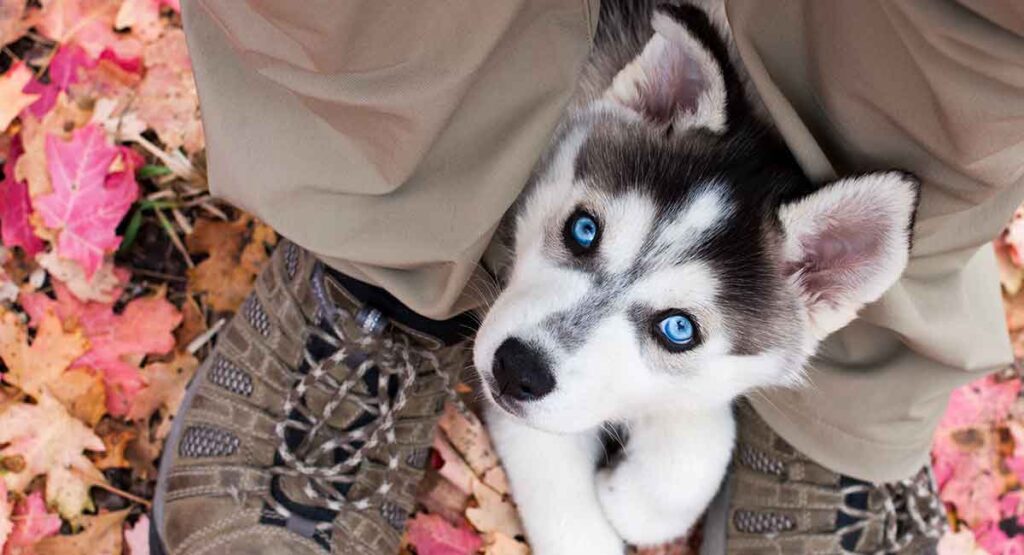
The black and white color pattern is a quite common one for Siberian Huskies. The black color can show up as jet black, black banded or dilute (can appear silver).
Gray and White Husky
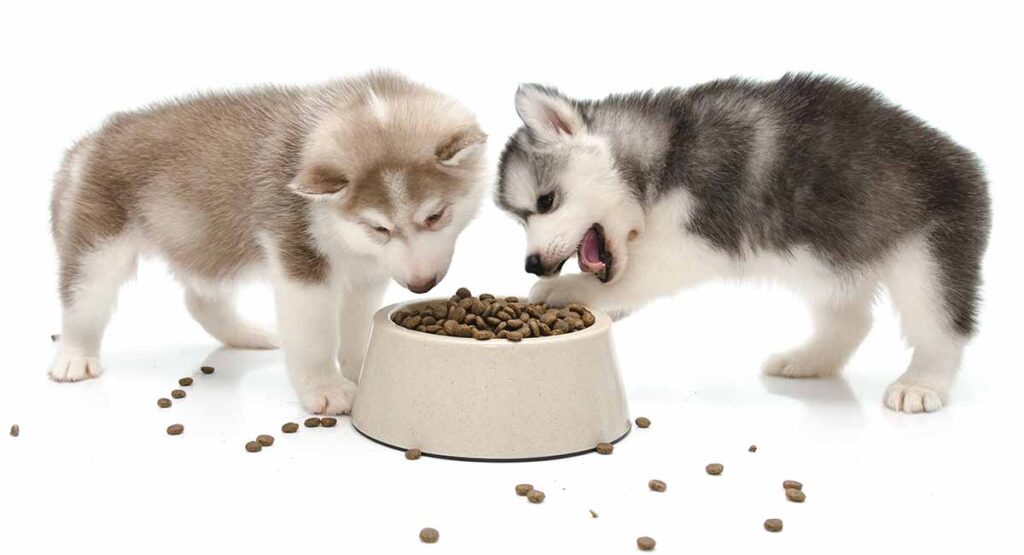
The gray colors can range from dark wolf gray to a yellowish gray to silver gray alternating with white.
Red and White Husky
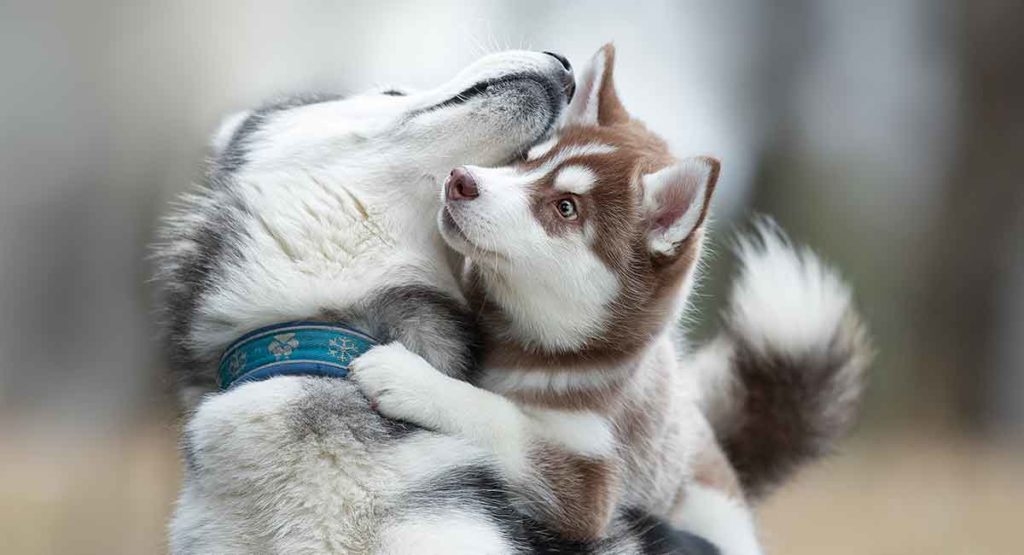
With a red and white color pattern, there generally will not be any black in the coat. However, the red can range from a deep reddish brown to a light coppery red alternating with white.
Sable and White Husky
Sable is a color pattern formed when the undercoat is reddish/copper and the top coat hairs are banded with red nearest the skin and black at the tips. This pattern alternates with white.
Agouti and White Husky
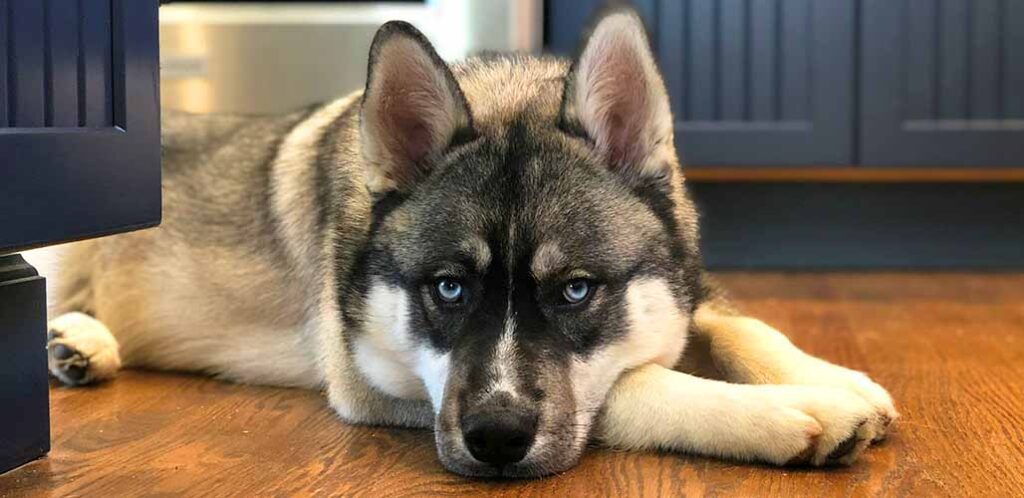
The wild wolf “agouti” is described more below. With this pattern, agouti alternates with white.
Siberian Husky Markings
The official Siberian Husky breed standard highlights the three most frequently seen colors and markings. However, even within these three types of markings, it is possible to see nearly infinite variations!
Agouti
The agouti marking is also called the “wild” or “wolf-like” marking. Several colors contribute to create the look of the agouti markings.
Typically the undercoat (the soft, thick, insulating under-layer) is dark in Siberian Huskies with agouti markings. The outer coat has multi-colored hairs. They are dark at the base (nearest the skin) and at the tip. In between is a lighter color.
Sable
The sable marking starts with a reddish or coppery undercoat. The outer coat hairs are reddish at the base (nearest the skin) with black coloration at the tip.
Piebald (Pinto)
The piebald markings, called “pinto” in the AKC breed standard, are quite different from either agouti or sable. In piebald Siberian Huskies, one coat color will predominate and one or two other colors will show up as a pattern of markings.
Piebald or pinto markings are also called the “Siberian Husky colors splash.”
Husky Coat Types
Most Huskies have a standard double coat. This has a downy undercoat and an outer coat that feels smooth to the touch. It’s medium length and shaggy looking. However, occasionally purebred Huskies have what is known as a wool coat. This is longer than the standard coat, and feels denser and fluffier.
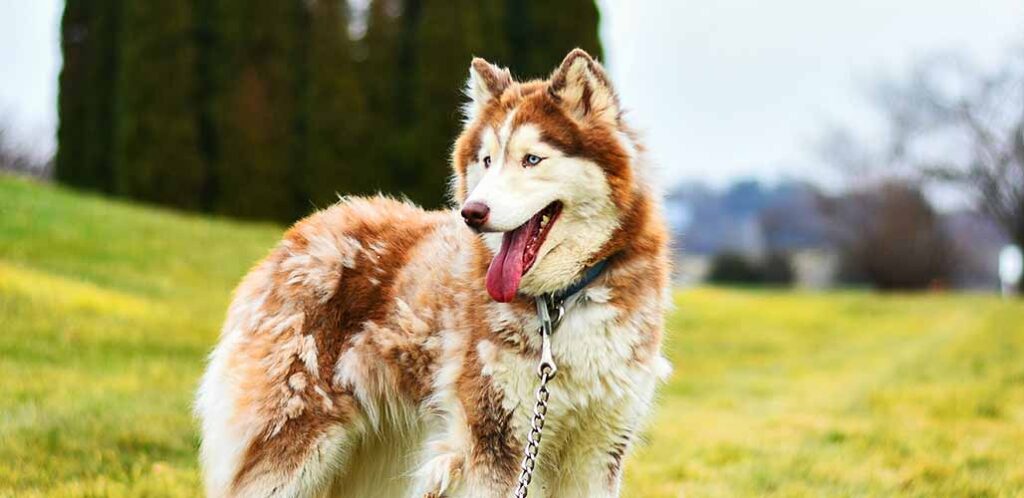
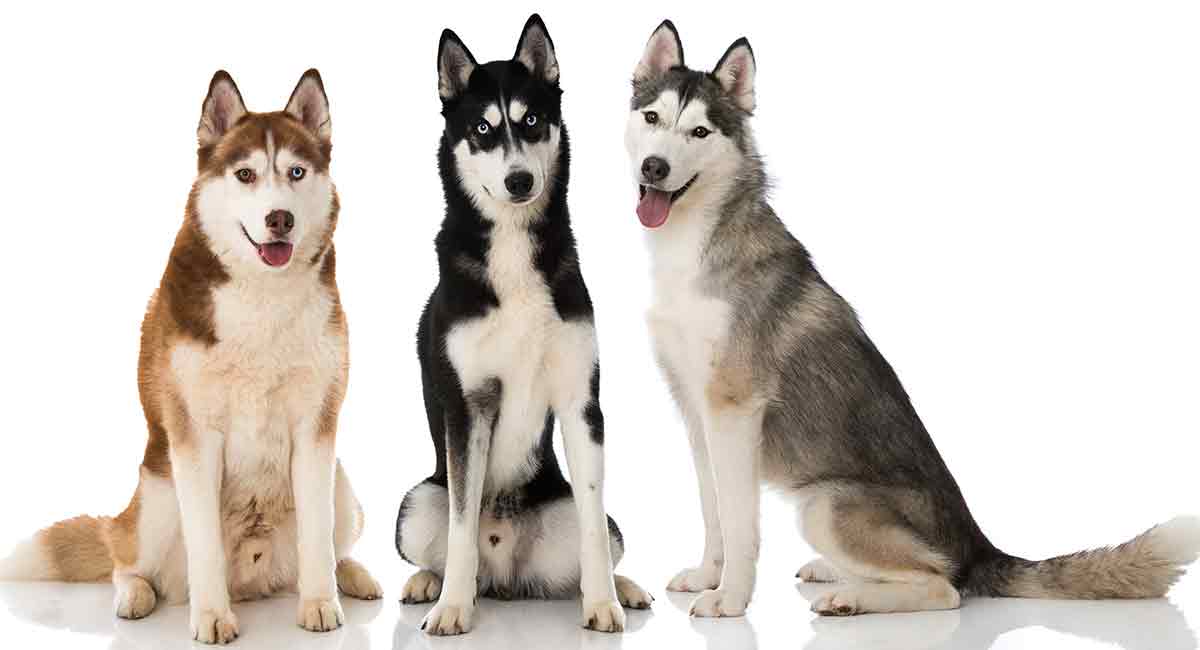
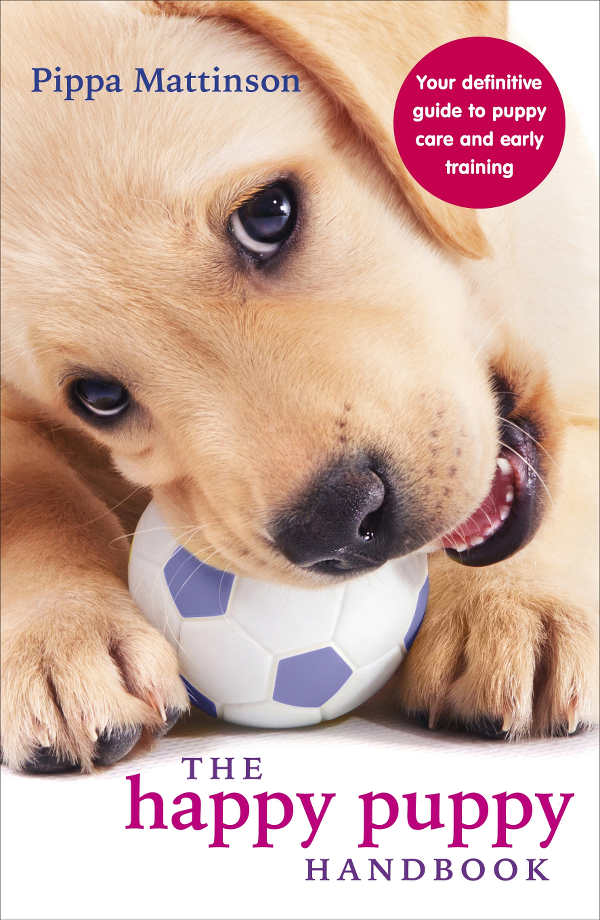
Melina says
While I am actually more of a cat person, my partner has an Agouti Siberian Husky and he (the dog, Togo, not my partner…though he is to, for the most part) is so well behaved. More recently my partner got a Red Copper Siberian Husky because apparently the breeders only wanted the more typical Black and White, not that copper and white…his name is Misfit and I’m still not sure whether my partner or Togo is training the pup more. The good thing is, Misfit is fitting in…and hasn’t gone after my partners oldest foster songs birds, yet (hopefully ever).
My partners youngest foster son (I’m not on any papers for either of the boys, beyond that I went through the mandatory training) actually adopted a Merle Husky and my partner already started planning the potential disaster of a vet bill (the dog is documented already as being deaf and blind in one ear). Under any normal circumstance, he wouldn’t have went along with adopting the pup but – that’s one of the extremely few things that boy has apparently asked for in years (which is just sad considering the boy is only 8), so my partner didn’t have the heart to say no. The boy let his brother name the pup (the two boys are actually blood brothers, my partner wasn’t planning on two, but the older didn’t want to leave without his brother so my partner took’em both), so the pups name ended up being Taiji.
Sharon Kirby says
I hope the SHCA continues to keep the merle gene out of the Siberian husky gene pool. I love that Siberians are one of the few breeds that allows all colors and markings but merle is not a historic color for the breed. Merle was not in the gene pool of the early siberians and it should not be introduced. Is merle a beautiful color? Yes it is, but it also comes with well documented health risks. Because siberians do have so many colors that are historic there is a very high risk if breeding merle to merle. A white siberian would hide merle. So could piebald. Light gray , black gray and whites…. merle in huskies is a recipe for disaster.
I am seeing merle crop up in many breeds that never had it before..pomeranians, cocker spaniels, pit bulls and American bully. Too much of a co incidence..its a beautiful color so people are deliberately introducing it by cross breeding then breeding back so they can pass the pups off as purebred with no thought to the health consequences.
Merle needs to stay in the breeds it is historic to,. Great Danes and herding breeds where they know how to manage it and the colors allowed in those breeds are such that merle is not hidden as often
Would you deliberately breed dogs with progressive retinal atrophy knowing you will produce pups that will go blind? I hope not. So why would you introduce merle into your breed if its not a color your breed ever had historically especially if you have a high risk of hidden merle making the production of blind and deaf pups likely?
MJ says
We have a black/gray (mostly black) and white husky. He has beautiful brown eyes. My son originally wanted him to have sky blue eyes but now I can’t imagine him without his beautiful brown eyes!
Diana Potter says
We had a black and white husky with the most beautiful brown eyes. To me I considered him a true husky as blue eyes were bred into them
Manu says
I have a fluffy white husky with pretty blue eyes. He’s goofy but so damn adamant at the same time! There’s no winning with him 😖
James Chase says
Yes, when asked by friends or family about my husky, MooN-DoG, I always answer the same… That he is the most intelligent, stubborn, sweetheart, and back talkingest, dog I’ve ever had the joy of having in my life!!! Not to mention the 4+ miles a day we wander are certainly going to keep me healthy!!!